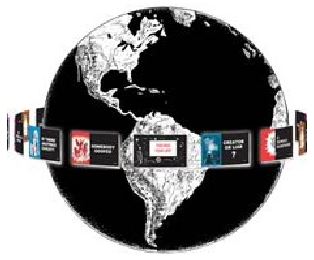Mormons Gaining Respect but History Still Weird
- Issue Date: September/October 2004
In April this year, the Illinois legislature passed a resolution apologizing to the Mormons for the 1844 "murder" of Joseph Smith and expulsion of the Mormons from the state. Lieutenant Governor Pat Quinn led a delegation to Utah to personally deliver the apology.
Mormon President Gordon B. Hinckley called the action a "magnanimous gesture" in speaking to the delegates to the 174th General Conference in Salt Lake City. He compared it to a similar gesture in 1976 by the governor of Missouri who revoked a "cruel and unconstitutional extermination order" approved against the Mormons in 1838. Never mind that Smith had been run out of several places for teaching and practicing polygamy and died in a shootout at the jail where he was being held for treason.
Hinckley told the Conference that there were nearly 12 million Mormons world wide. "We are now a great international family, living in many nations and speaking many languages," he said, adding, "These and other developments represent a most significant change of attitude toward the Latter-day Saints."
Yet the house rests on unstable historical and doctrinal quicksand. Most striking are the persistent questions about historical references in the Book of Mormon. Thomas F. Heinze, in his book, Answers to my Mormon Friends, says, "The Book of Mormon is presented as true history and gives a number of details which we can check out." It states that Hebrew and Egyptian people migrated to the Americas soon after the Tower of Babel. The Native Americans are said to be descendents of these people.
However, recent DNA tests trace their genetic line to East Asians instead, supporting the theory that their ancestors came across from Mongolia into Alaska. Also, American Indian languages contain no trace of Hebrew or Egyptian. No other artifacts have been discovered by archeologists that can be traced to Middle Eastern sources.
In addition, the Book of Mormon states that these Hebrew immigrants found "beasts in the forest of every kind, both the cow and the ox, and the ass and the horse, and the goat and the wild goat."
"All the animals mentioned were imported to the Americas by Europeans after Columbus discovered America," says Heinze. No animals native to the Americas before Columbus show up in The Book of Mormon.
Soul winners, we need to help any Mormon who will listen to the facts. Also, we need to be on the lookout for anyone considering converting to Mormonism and make sure they fully understand the unbiblical doctrines and fake history in The Book of Mormon.
Author David Daniels suggests that Joseph Smith's Book of Mormon is similar to the little boy who held up a blank sheet of paper at show-and-tell. When asked what it was, he declared, "It's a cow in the grass."
"But where is the grass?
"The cow ate it."
"Then were is the cow?"
"She left to find more grass,"
Daniels suggests the following analogy:
One day a man named Joe showed his book to a friend.
"Want to read my book? It's an accurate translation of golden plates I received from an angel, who got them out of a secret spot in a hill."
"That's incredible, Joe! Where's the secret spot?"
"I can't show it to you."
"Why? Isn't it there now?"
"Sure it is. It's just not visible anymore."
"That's strange," thought the man. "Okay, where's the angel? Can I talk to him?"
"No, he went back to heaven."
"No angel either, huh?"
"Nope."
"Well, at least he gave you those golden plates! They must be incredibly valuable. Can you show them to me?"
"No, because the angel took them back to heaven with him."
"How will I know if you translated the words right?"
"You're gonna have to trust me."
"So you have no secret spot, no angel and no golden plates? And you want me to trust you?"
"Yep."
And 12 million do today.
- See more articles on related topics:
- False Religions
- Mormonism
- Mormon Teachings
- Mormon History
Other Articles from September/October 2004:
- Council Member's Strong
Stand Defeats Homosexual Law
- Congress Members Request UN
Supervision of Election
- Really — How Old IS That Fossil?
- Soul Winners Get Creative on Halloween
- A Message From Jack Chick
- Chick Mail Bag Sep-2004
- Prison Ministry Letters: Sep-2004
- Tract Passing Tips - September 2004
- Study Proves Heavy TV Diet Breeds Violence.
More on Mormonism:
Products of Interest:
-

Enchanter, The
32-PAGE, FULL COLOR COMIC BOOK - The story of Joseph Smith. After people read this illustrated book, they will not be vulnerable to the Mormon recruiters!
-

Answers To My Mormon Friends
80 pages
This easy-reading book, written for either Christians or Mormons, proves that Mormonism is not of God, and includes a clear gospel message and salvation appeal.



